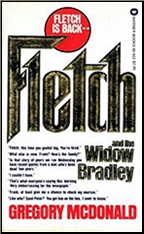REVIEWED BY DAVID VINEYARD:

MENACE. Paramount, 1934. Gladys Michael, Paul Cavanaugh, Berton Churchill, Henrietta Crossman, John Lodge, Raymond Milland, Halliwell Hobbes, Robert Allen, Forester Harvey, Arletta Duncan Screenplay Chandler Sprague, Anthony Veilliers based on the novel R.I.P by Philip MacDonald (Collins, UK, 1933; published in the US as Menace, Doubleday, 1933). Directed by Ralph Murphy.
RYNOX. Ideal, 1932. Stuart Rome, John Londgren, Dorothy Boyd. Screenplay (mostly uncredited) J. Jefferson Farejohn, John Jerome, Philip MacDonald (his novel, Collins, UK, 1930; published in the US as The Rynox Murder Mystery , Doubleday, 1931), and Michael Powell, the latter also director.
These two adaptations of novels by Philip MacDonald were virtually unknown to me until they showed up on YouTube, and certainly neither of them is in a class with his better known film adaptations such as X Vs Rex, Patrol, The List of Adrian Messenger (which ironically has a screenplay by Anthony Veilliers who co-wrote this one), 23 Paces to Baker Street, or even the earlier version of that book under its British title The Nursemaid Who Disappeared.

Menace is the somewhat better of the two, working at least as a suspense film to some extent if not as much as a mystery, and moving with some vigor. Gladys Michael, Paul Cavanaugh, and Berton Churchill are wealthy friends in Africa just before the monsoons. Bored, they convince dam supervisor Ray (billed as Raymond) Milland to leave his post to play bridge with them. When the storms break early, Milland tries to fly back through the storm only to arrive in time to see the dam collapse and his mother and sister below killed, as well as hundreds of others.
In a fit of remorse he flies his plane into the ground taking his own life.
Back in England his brother Timothy, who is mentally disturbed, swears vengeance on the three he blames for his brother’s death, is put in a mental asylum, escapes, and one year later they are in Malibu in Michael’s beach side villa when he finally catches up with them.

Soon to be trapped in the villa with them are a new butler (Halliwell Hobbes) hired from an agency, and who proves to be a crack shot when Cavanaugh tests him; Michael’s younger sister, who she raised when their parents died and her fiance (Arletta Duncan and Robert Allen); Cavanaugh’s driver (Forester Harvey); and a nosy eccentric old lady neighbor (Henrietta Crossman) who shows up on their doorstep with her son’s friend in tow (John Lodge).
Not long after the lights go out, and the phone goes dead and all the autos are sabotaged. Not long after that Churchill is killed by a knife thrown by Timothy. Then Cavanaugh barely survives an attack.
Now they are waiting for Timothy to strike and unsure who he is, if he is one of them at all. All we know is we have seen the butler attack Michael’s sister and tie her up and gag her.

Not much real mystery here about who the killer is, even with a bit of misdirection, and there is one decent clue planted early on that does explain one surprise; plus two suspects complain of headaches– which we know Timothy suffers from — as half decent red herrings.
What is notable here is not the film itself, which is at best a minor success, but just how stiff and unreal everyone else in the film seems after Ray Milland’s few scenes at the start. His perfect ease on screen, even delivering what isn’t much more than ‘tennis anyone’ dialogue, compared to everyone else in the film is striking. The film actually never recovers from his early death because there is no one in the film even remotely as attractive or natural on screen.
It is about as clear a demonstration of the power of a natural screen presence as you will ever see. It’s as if everyone else is in a different film.

Rynox, based on the The Rynox Mystery, basically has one thing going for it. It happens to be one of the earliest films directed by Michael Powell, who as one half of the Archers (with Emric Pressberger) would create such films as 49th Parallel, Black Narcissus, A Matter of Life and Death, I Know Where I’m Going, The Life and Death of Colonel Blimp, and more.
Tycoon and founder of Rynox, F. X, Benedik (Rome) is threatened by the theatrical and larger than life Boswell Marsh. When Benedik is murdered, son Tony Benedik (Longdren, and the closest thing to Anthony Gethryn in the film — ironically Longdren is also television’s first Sherlock Holmes) takes over the business and the investigation.

Unfortunately the very nature of film means the big reveal that made the novel a success is so obvious even the most naive film goer must have found it crystal clear. The script tries hard — little surprise with that lineup — and Powell shows a few directorial flourishes, but when the chief surprise in any mystery is telegraphed as this one is by bad acting and worse makeup, there isn’t much anyone can do to save it.
This might have worked better is they had actually filmed the book as a detective story instead of trying to getting into character and showing the viewer far too much. I’ll only say that something similar worked much better when John Huston tried his hand at a MacDonald novel.

Both films are mostly of interest to MacDonald fans or film historians, the former for an early star turn by Ray Milland and the latter as a footnote in the career of Michael Powell. I won’t warn anyone off them, because both have their moments, but take them for what they are, primitive variations on more familiar formulas.
Menace at least has the advantage of moving fast and one or two touches of suspense and actual mystery, Rynox — well, it’s an early film by a great director.
